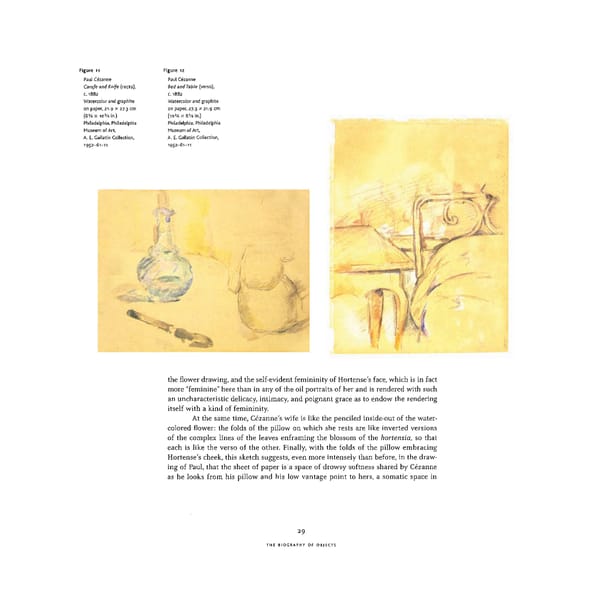Figure 11 Figure 12 Paul Cezanne Paul Cezanne Carafe and Knife (recto), Bed and Table (verso), €.1882 c. 1882 Watercolor and graphite Watercolor and graphite on paper, 21.9 x 27.3 cm on paper, 27.3 x 21.9 cm 5 3 3 5 (8 /s x io /4 in.) (io /4 x 8 / in.) 8 Philadelphia, Philadelphia Philadelphia, Philadelphia Museum of Art, Museum of Art, A. E. Gallatin Collection, A. E. Gallatin Collection, 1952-61-11 1952-61-11 the flower drawing, and the self-evident femininity of Hortense's face, which is in fact more "feminine" here than in any of the oil portraits of her and is rendered with such an uncharacteristic delicacy, intimacy, and poignant grace as to endow the rendering itself with a kind of femininity. At the same time, Cezanne's wife is like the penciled inside-out of the water- colored flower: the folds of the pillow on which she rests are like inverted versions of the complex lines of the leaves enframing the blossom of the hortensia, so that each is like the verso of the other. Finally, with the folds of the pillow embracing Hortense's cheek, this sketch suggests, even more intensely than before, in the draw- ing of Paul, that the sheet of paper is a space of drowsy softness shared by Cezanne as he looks from his pillow and his low vantage point to hers, a somatic space in 29 THE BIOGRAPHY OF OBJECTS
 Cézanne in the Studio: Still Life in Watercolors Page 43 Page 45
Cézanne in the Studio: Still Life in Watercolors Page 43 Page 45